方案详情文
智能文字提取功能测试中
FORTEBIO6APPLICATION NOTE Reducing variability in small molecule screeningand kinetics applications Charles A. Wartchow, Ph.D. and Danfeng Yao, Ph.D., Scientist ll, ForteBio Introduction Minimizing the variability of background signals is a key parame-ter to the success of demanding applications such as small mol-ecule analysis. By reducing the background variability, smallerpositive signals can successfully be resolved, providing anincrease in assay sensitivity. This application note demonstratesthe use of a reference biosensor with biotinylated streptavidinfor increasing signal-to-noise levels, thereby improving thedetection of small molecules, including fragments. Small molecule kinetics and fragmentscreening on the Octet instruments ForteBio's Super Streptavidin (SSA) Biosensor is the primarytype of biosensor used for small molecule applications. SSAbiosensors are typically blocked with biocytin when used as areference surface (for more details on running a small moleculeassay, see Technical Note 16, Small Molecule Binding Kinetics).However, the optical properties of this reference surface aredistinct from those of the target surface, presumably due tothe increase in optical thickness accompanying an increase inthe protein layer of the target biosensor. For high-sensitivityapplications, this difference can introduce minor artifactsinto the raw data, resulting in slightly higher variability whenassessing compounds or negative controls. To compensate for the difference in the optical propertiesbetween a protein-loaded target biosensor and the biocy-tin-blocked biosensor, a biotinylated protein can be used inplace of biocytin. When using the referencing method de-scribed here, the standard deviation of the signals resultingfrom buffer controls for the model system are~1-3 pm lowerwhen compared to standard reference methods. This resultis significant, since 1-3 pm of standard deviation translates to3-9 pm of variances in the detection limit (where the LLOD =3 X standard deviation + average background signal), which isimportant when discriminating true signals from those close tobackground levels. Choosing a protein for the referencebiosensor The optimal reference protein is one that is identical to thetarget protein, but that does not bind the molecules of interest.Some groups are fortunate and have protein mutants that areinactive, and these are ideal reference proteins for creatingreference biosensors. If such a protein is available, it shouldbe biotinylated similarly to the target protein (see TechnicalNote 6, Biotinylation of Protein for Immobilization onto Strepta-vidin Biosensors and Technical Note 12, Biotinylating VerySmall Quantities of Protein for Immobilization onto StreptavidinBiosensors). For best results, the biotinylated reference proteinshould be loaded onto the SSA biosensors at a density similarto the target protein. The biotinylated reference protein can betested as described here. More often, inactive versions of proteins are not available and asurrogate must be used. A blocked form of streptavidin is a use-ful surrogate—adding a layer of blocked streptavidin to the SSAbiosensors used as a reference makes the optical propertiesof the target and reference biosensors more similar. For bestresults, the loading signal of the reference protein should besimilar to the loading signal of the target protein. The followingprotocol creates biotinylated, blocked streptavidin (SAV-B4) anddescribes how to use it on reference biosensors. Preparing biotinylated, blocked streptavidin(SAV-B4) MATERIALS NEEDED Preparing the conjugate · Streptavidin, 55 kD (Scripps Laboratories part no. S1214) ·Biotin, 244 Da (Pierce Protein Research Products part no.29129) ·Biotin-LCLC-sulfo-NHS, 670 Da (Pierce Protein ResearchProducts part no. 21338) · PBS (Invitrogen/Gibco or equivalent) 3-12 mL dialysis cas-sette, 10k MWCO (Pierce Protein Research Products) Testing the conjugate ·Super Streptavidin biosensors (ForteBio part no. 18-5057) ·Octet RED96,RED96e,RED384 or HTX instrument with soft-ware version 6.X or later ·Black, flat-bottom microplates (96-well: Greiner Bio-onepart no. 655209;384-well: Greiner Bio-one part no. 781209;384-tilted well: ForteBio part no. 18-5080) Technical resources Available at www.fortebio.com · Technical Note 6, Biotinylation of Protein for Immobilizationonto Streptavidin Biosensors ·Technical Note 12, Biotinylating Very Small Quantities of Pro-tein for Immobilization onto Streptavidin Biosensors ·Poster by C. Wartchow, et al. Small Molecule FragmentScreening on the Octet Platform Conjugate preparation 1Prepare a 100 pg/mL (400 mM) solution of biotin by adding2.5 mg to 25 mL PBS. 2Prepare 1 mg/mL solution of streptavidin (18 mM) by dis-solving 6 mg of streptavidin in 6 mL of the 100 pg/mL biotinsolution prepared in Step 1. 3Prepare a 1 mg/mL solution (1.5mM) of biotin-LCLC-sulfo-NHS by adding 5 mg to 5 mL of PBS buffer. 4 Add 73.2 pL of 1.5 mM biotin-LCLC-sulfo-NHS to 6 mL of thestreptavidin solution containing 100 pg/mL biotin. The finalbiotin-LCLC-sulfo-NHS concentration will be 18 mM. Incubatefor 1 hour at room temperature. 5Place 1 L of PBS in a 1L beaker and add a stir bar. 6 Transfer the streptavidin solution to the dialysis cassetteaccording to the manufacturer’s instructions. Dialyze againstPBS buffer (3X1L,18 hours) in a refrigerator. 7 Transfer to a storage vessel, store at 4C.Note: The stability of this conjugate at 4°℃ or at -20℃ hasnot been assessed, and may require freezing if use extendsbeyond one week. Conjugate testing Using the methods described in Technical Note 16, Small Mol-ecule Binding Kinetics, test the loading of the biotin-referenceprotein on SSA biosensors using an Octet RED96, RED96e,RED384 or HTX instrument. For best results, the signal (nmshift) from loading the biotinylated reference protein shouldbe equivalent to the signal from loading the biotinylated targetprotein.If loading of the reference protein is higher or lowerthan that of the target protein, then the conditions (concentra-tion, time of loading, etc.) for immobilizing the reference proteinshould be further optimized. Sample data using biotinylated, blockedstreptavidin (SAV-B4) as a reference protein The buffer control data shown in Figures 1 and 2 was generat-ed during a study screening a small molecule library for bind-ers to immobilized carbonic anhydrase. In this screening study,it was important to minimize the variability of the backgroundsignals in order to identify small molecule binding responses.For full details on the screening study, please refer to the post-er by C. Wartchow, et al., Small Molecule Fragment Screeningon the Octet Platform. To determine the baseline variability in this small moleculescreening assay, 16 target biosensors and 16 reference bio-sensors were used on the Octet RED384 instrument to assaya 384-well microplate filled with buffer. The resulting data wasprocessed using a standard double-reference subtractiontechnique available in Octet Data Analysis software, which usesthe reference biosensors and a set of reference wells to correctfor systematic baseline offsets. Ideally, after data processing thebaseline will be stable, with no discontinuities. In reality, smallartifacts can show up as a result of the optical changes fromwell to well. For this example, either the biocytin-blocked SSA biosensorsor the SAV-B4 biosensors (preparation described previously)were used as references for the carbonic anhydrase-coatedtarget biosensor. The typical loading signal for the biotinylatedcarbonic anhydrase was 6-10 nm and for the SAV-B4 conjugatewas 4-7 nm. Figure 1 shows the double-reference subtract-ed data from the buffer-only plate when using either of thesereference biosensors. When comparing the data using thebiocytin-blocked biosensors and the SAV-B4 biosensors, boththe average baseline signal and the standard deviation of thebaselines are significantly lower when using the SAV-B4 biosen-sors as a reference. This improvement is even more apparentwhen looking at the calculated LLOD of signal for each assaybased on these buffer controls (Table 1). The experiment was repeated using the ForteBio 384-tiltedwell plate (384TW) and is shown in Figure 2. Using this plate inconjunction with the SAV-B4 reference biosensors,the LLODis decreased from 24 to 11 pm (Table 1). This allows for positivesignals in the 14-20 pm range to be identified as hits. Thesesignals would have been lost in the baseline noise if the assaywere run using the original biocytin-reference biosensors and astandard 384-well microplate. 1 Wartchow C, Podlaski F, LiS, Rowan K, Zhang X, Mark D and HuangKS. Biosensor-based small molecule fragment screening with biolay-er interferometry, J Comput Aided Mol Des. 25 (7): pp 669-76,2011. uk@moldev.com ForteBio ForteBio Analytics (Shanghai) Co., Ltd. Molecular Devices (UK) Ltd. Molecular Devices (Germany) GmbHFORTEBIO Fremont Boulevard No. Shang Ke Road Eskdale Bismarckring remont, CA Zhangjiang Hi-tech Park Winnersh Triangle Biberach an der RissOCTET-or Shanghai, China Wokingham, Berkshire Germanyfortebio.info@moldev.com salesops.china@moldev.com RGS, United Kingdom +ww.fortebio.com +Molecular Devices,LLC. All trademarks used herein are the property of Molecular Devices, LLC. Specifications subject to change withoutnotice. Patents: www.moleculardevices.com/product patents. FOR RESEARCH USE ONLY. NOT FOR USE IN DIAGNOSTIC PROCEDURES.AN-Rev C 与靶点蛋白的结合活性分析成为小分子药物开发的关键环节之一。小分子化合物药物与靶点的动力学参数是非常重要的表征参数,直接影响到了化合物在体内的半衰期以及所需的药物剂量。但缺少高通量稳定有效和耐用的生物物理/生化检测方法成为阻碍小分子药物发现和开发的障碍之一。基于生物层干涉(BLI)技术的Octet检测平台具有高通量、高灵敏度(神药二甲双胍(129Da)的检测)【1】、对DMSO等有机溶剂不敏感等优点,已经成为小分子药物开发过程中的中坚力量,所以最近有几篇文章用Octet做了海量的小分子数据,陈老湿这里show一下:对比MS、NMR、ITC、紫外吸收、光散射、荧光位置、表面等离子共振SPR、生物层干涉技术BLI用于与小分子化合物的结合活性分析。【2】ITC技术对样品本量需求大,并且对缓冲液、温度和pH值敏感,因此限制了ITC技术在筛选复杂样品库中的应用。SPR技术虽然已经广泛应用于药物结合活性的分析,但是通量低,微流控的设计使其难以应用于复杂样品库的筛选,芯片与化合物的非特异性问题,小分子化合物的水溶性问题,样品和缓冲液折光率的差异导致的假阳性问题都限制了SPR技术在该领域的应用。因此,研究人员采用成本更低,通量更高,可耐受粗样品的BLI技术检测小分子化合物。近期就有几篇不错的应用BLI技术开发小分子药物的文章发表,下面就让陈老湿给大家作一个简单的介绍(文末还有陈老湿力推的小分子检测“神功宝典”!)。➤用Octet建立DNA结合的小分子药物筛选方法俄勒冈州立大学【2】DNA已经成为抗肿瘤药物研究的一个重要的药理学作用靶点。由于DNA的灵活性以及缺少像蛋白质那样的结合位置,且小分子化合物结合后还可能导致DNA空间构象改变,使得开发新的化合物特异性结合靶标DNA具有一定的挑战性。首先研究人员选取了6个已经报道的与DNA结合的化合物优化和调整检测方法,检测结果与文献报告结果一致,证明了BLI技术可适合地、可靠地、有效地检测从微生物中提取的复杂组分与DNA的结合。使用Octet检测细菌提取物的技术路线:用Octet固化DNA检测细菌提取物,阳性提取物用HPLC进行分离后再用Octet进行鉴定。随后研究人员筛选了>100个从微生物中提取的与DNA的结合的化合物,并且得到了几个结合活性较高的化合物,包括棘霉素,放线菌素等。ab图:BLI发现从细菌RM1-1的第六个分离组分(放线菌素)与DNA有结合;cd图:多浓度的放线菌素与DNA结合进行鉴定➤新冠肺炎抗病毒药物筛选与验证【3】新冠病毒RNA依赖的RNA聚合酶(RdRp)是理想的抗病毒靶点。中国医学科学院的研究人员首先通过基于结构的虚拟筛选,筛选了15220个化合物。选择结合最强的50个hits,通过Octet高通量的分析了这些化合物与靶点SARS-CoV-2 RdRp的结合活性。从中挑选结合活性强的化合物进行体外和细胞学实验分析。研究人员发现Corilagin (RAI-S-37)作为SARS-CoV-2 RdRp的非核苷抑制剂,可直接与RdRp结合,在细胞外和细胞活性检测中均能有效抑制聚合酶活性,抑制SARS-CoV-2感染的EC50值为0.13 μmol/L)。Corilagin具有良好的安全性和药代动力学的数据,使其成为新冠肺炎潜在的治疗药物。Octet筛选与靶点蛋白结合的化合物,用NTA传感器固化SARS-CoV-2 RdRp,与50个化合进行结合(50uM),有16个化合物信号大于0.02nm,然后多浓度检测进一步筛选出8个具有浓度依赖信号的化合物。在筛选出的8个化合物中,RAI-S-37与SARS-CoV-2 nsp12的亲和力高,达到0.54uM➤人参活性组分作用靶点研究【4】人参能够调节大脑兴奋性,促进学习记忆,而人参的主要活性成分是人参皂苷,但是其在大脑中的作用靶蛋白尚未明确。南京中医药大学的研究人员通过亲和层析筛选与人参皂苷主要成分相互作用的蛋白,鉴定出14-3-3 ζ 蛋白为人参皂苷在脑组织中的潜在靶点。通过生物层干涉技术BLI和等温滴定量热法ITC鉴定了20(S)- prototopanaxadiol (PPD,人参皂苷的代谢物)与14-3-3 ζ 蛋白的直接相互作用。14-3-3 ζ 蛋白-PPD复合物的共晶体结构表明,14-3-3 ζ蛋白的R56、R127和Y128残基与部分PPD之间存在主要的相互作用,突变上述任何一个残基都会导致PPD与14-3-3 ζ蛋白的亲和力显著降低。研究结果有助于更好的了解人参调节神经元活性的作用机制以及基于人参皂苷结构开发与14-3-3 ζ 结合的小分子化合物。上图为中药靶点研究的技术路线:BLI(Octet)主要用于鉴定靶点(14-3-3 ζ蛋白)与人参皂苷的结合;下图:靶点与突变体与人参皂苷的亲和力测定 Ending 作为技术支持的陈老湿来说,小分子的检测还是要说一些丑话,小分子化合物样品难度可比大分子大一些,因为:1. 分子量较小,信号水平较低,容易收到非特异性等因素干扰2. 一些小分子可溶性差,真实浓度与理论浓度可能有差别3. 亲和力水平跨度大,检测浓度范围比较宽泛4. 可能含有各种有机溶剂,这对Octet和其传感器没有影响,但是可能对蛋白活性有影响因此如果检测方法优化不当的话,实验数据的重复性有时不甚理想。鼓吹“仪器是万能的”之类的大话是没有用的,技术专家同用户分享丰富的经验以及找到切实有效的解决方案才是关键,才能让仪器设备变得“万能”。Octet陈老湿奉上 “神功宝典”一份《降低小分子筛选及动力学应用的变异性》,希望各位大侠早日神功大成,记得点击下载哈!-参考文献-【1】Yaya Zhang, et al. Metformin interacts with AMPK through binding to c subunit. Mol Cell Biochem (2012) 368:69–76.【2】Overacker, R.D. et al. Biolayer interferometry provides a robust method for detecting DNA binding small molecules in microbial extracts. Anal Bioanal Chem 413, 1159–1171 (2021).【3】Li Q, et al. Corilagin inhibits SARS-CoV-2 replication bytargeting viral RNA-dependent RNA polymerase, Acta Pharmaceutica Sinica B, 2021.【4】Feiyan Chen, et al.Identification and confirmation of 14-3-3 ζ as a novel target of ginsenosides in brain tissues,Journal of Ginseng Research,2020,1226-8453.
关闭-
1/3
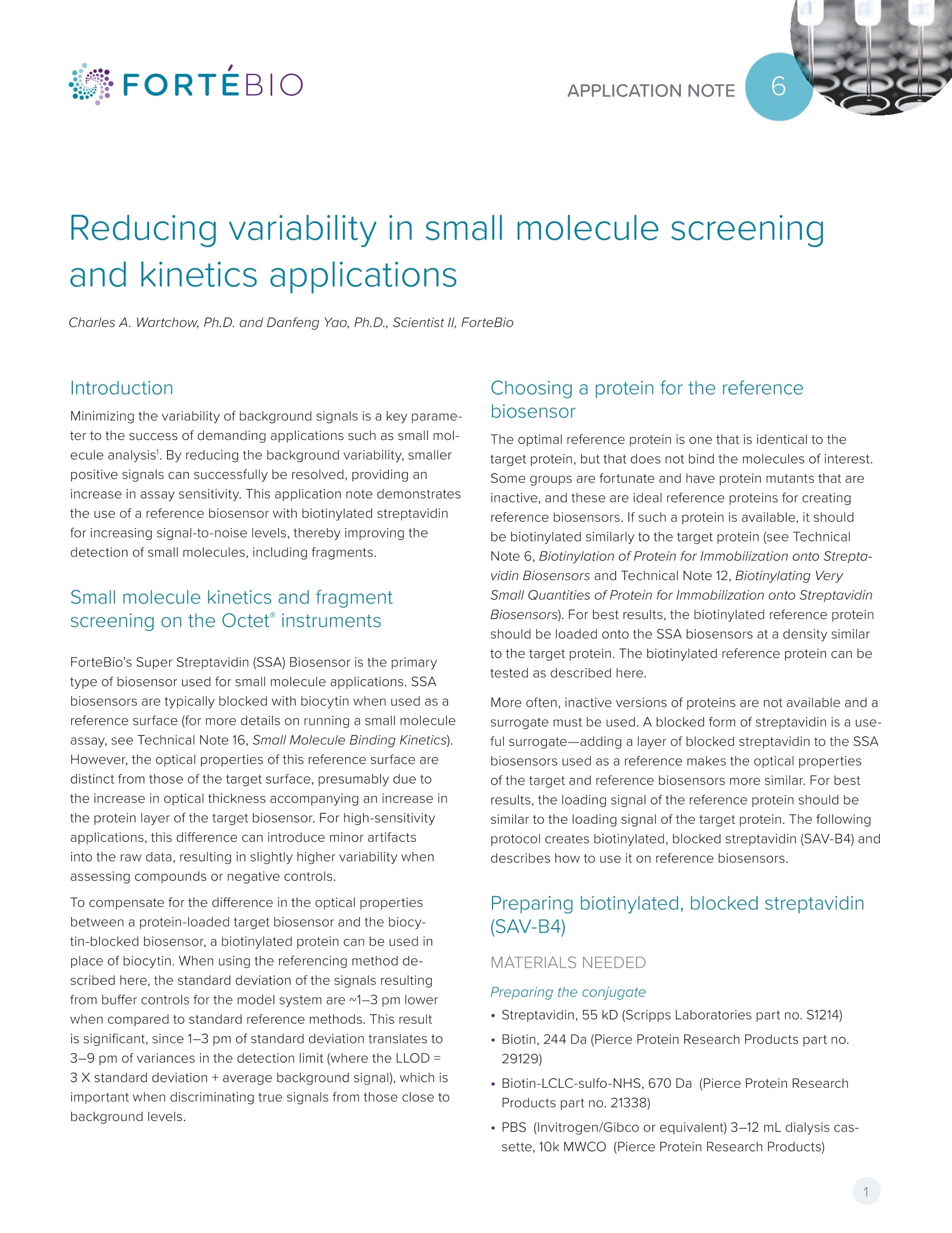
-
2/3

还剩1页未读,是否继续阅读?
继续免费阅读全文产品配置单
德国赛多利斯集团为您提供《小分子化合物中病毒检测方案(大分子作用仪)》,该方案主要用于化药制剂中微生物相关及生化特性检测,参考标准《暂无》,《小分子化合物中病毒检测方案(大分子作用仪)》用到的仪器有赛多利斯 Octet® R2 生物分子相互作用分析系统、赛多利斯 Octet® R8 生物分子相互作用分析系统。
我要纠错
推荐专场
相关方案


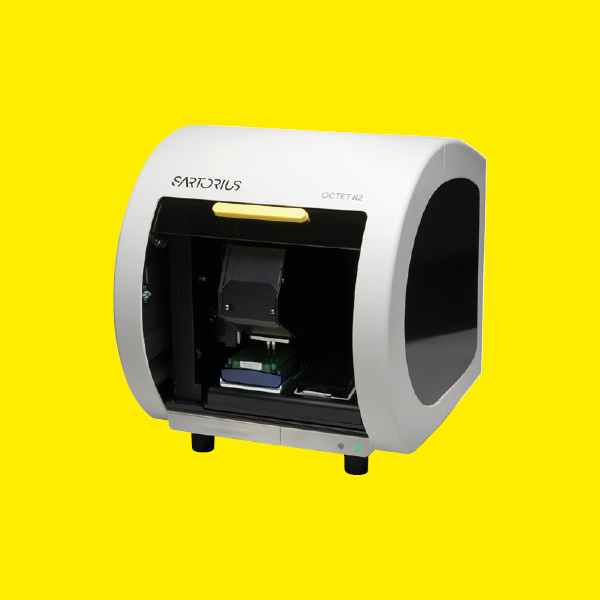
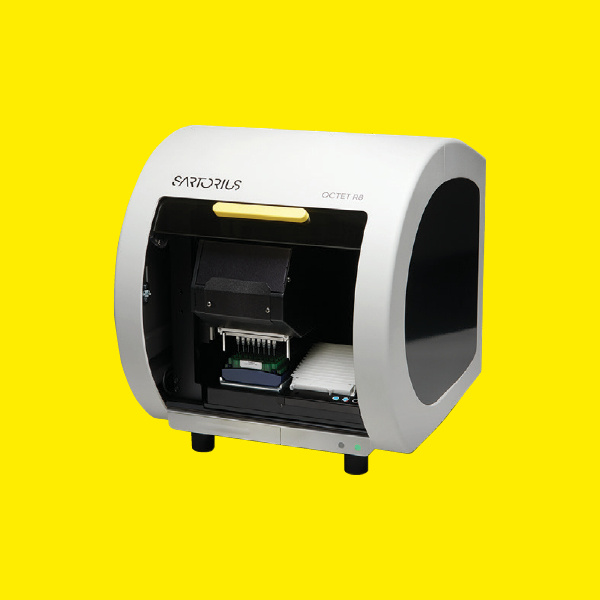
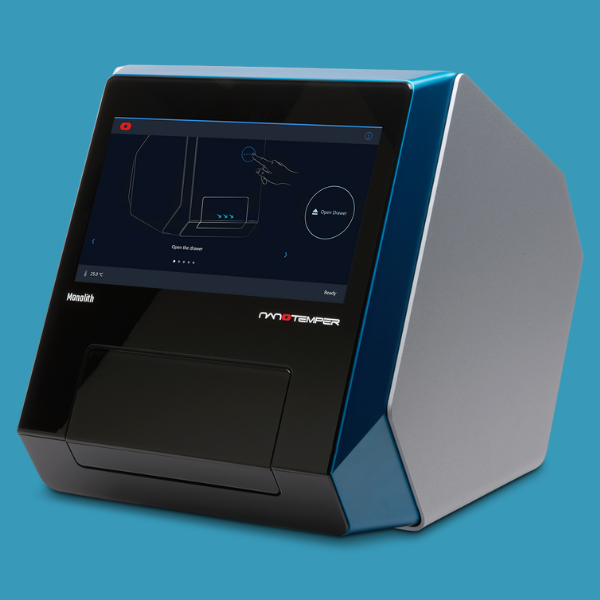
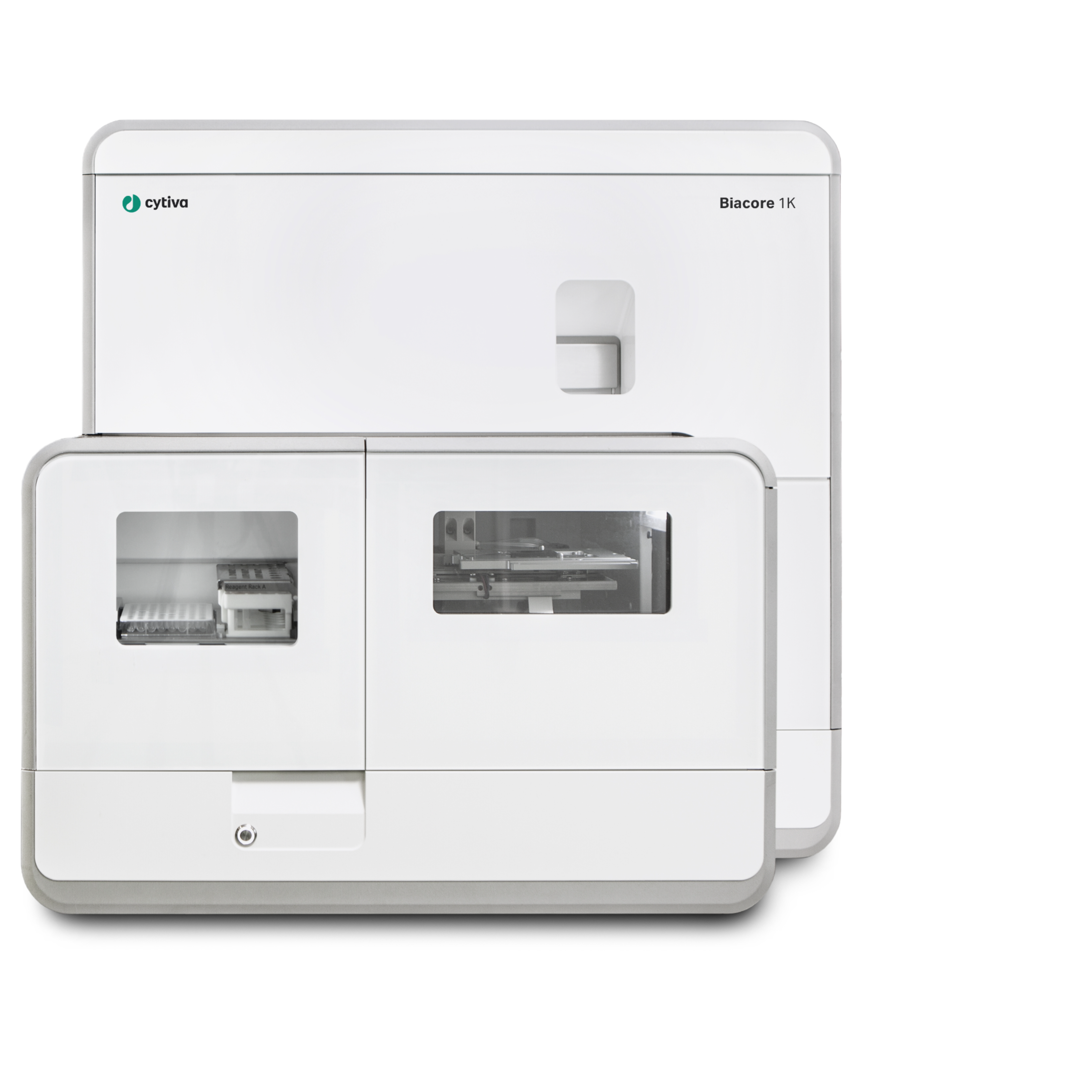
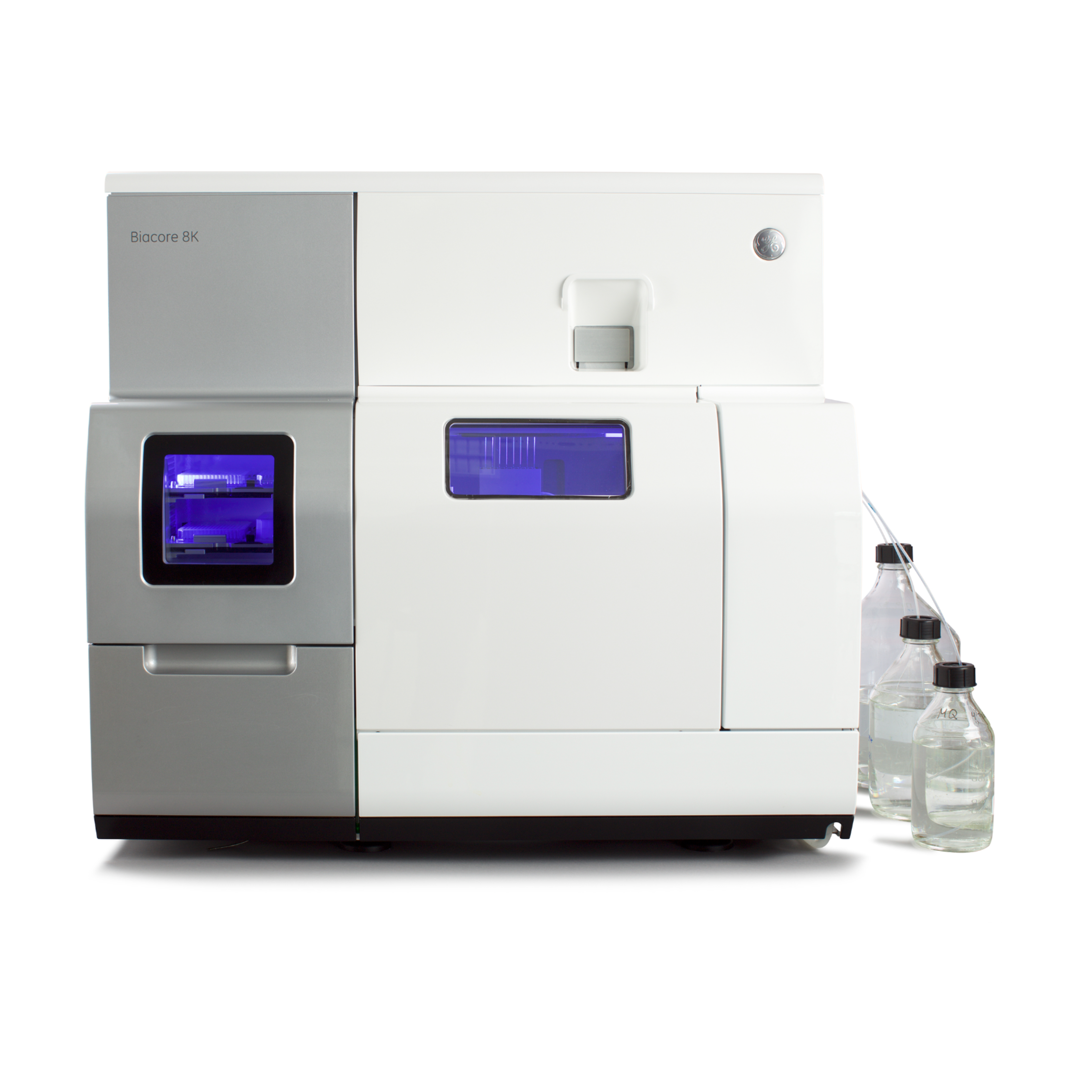
 咨询
咨询
